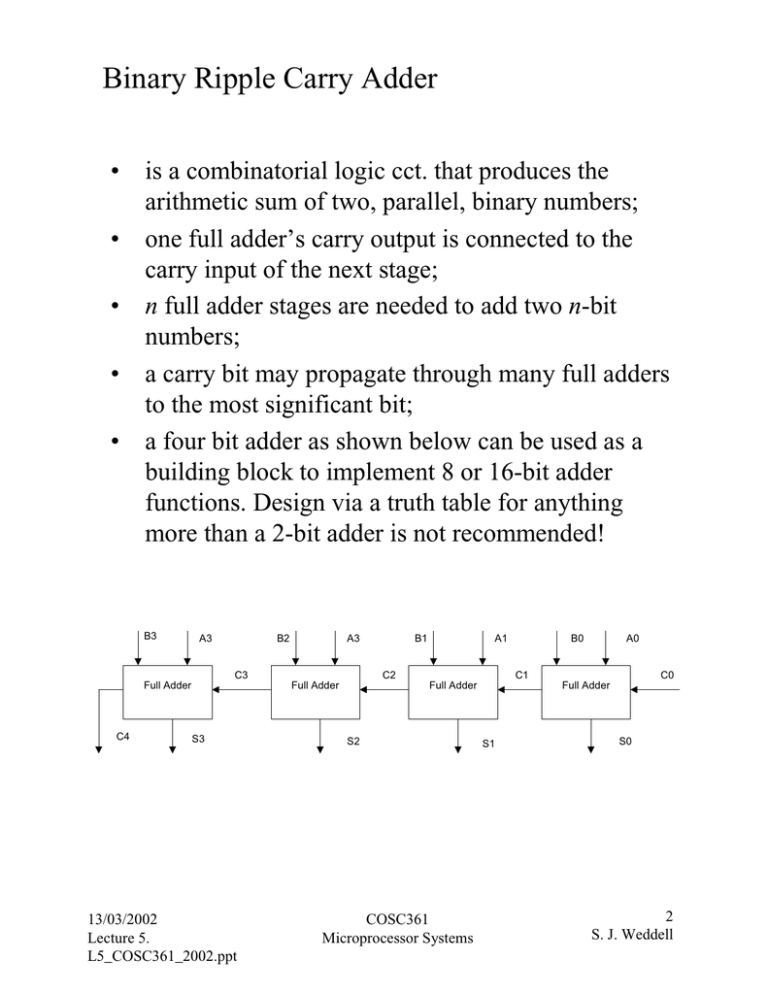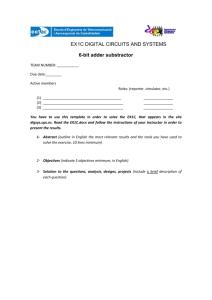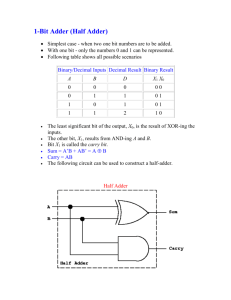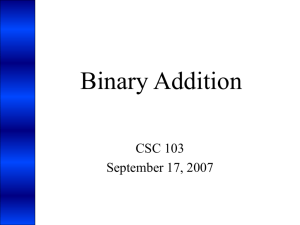Binary Ripple Carry Adder
advertisement

Binary Ripple Carry Adder • is a combinatorial logic cct. that produces the arithmetic sum of two, parallel, binary numbers; • one full adder’s carry output is connected to the carry input of the next stage; • n full adder stages are needed to add two n-bit numbers; • a carry bit may propagate through many full adders to the most significant bit; • a four bit adder as shown below can be used as a building block to implement 8 or 16-bit adder functions. Design via a truth table for anything more than a 2-bit adder is not recommended! B3 A3 C3 Full Adder C4 B2 S3 13/03/2002 Lecture 5. L5_COSC361_2002.ppt A3 B1 C2 Full Adder A1 C1 Full Adder S2 COSC361 Microprocessor Systems B0 S1 A0 C0 Full Adder S0 2 S. J. Weddell Adder Subtractor Circuits • achieved by adding the 2’s complement of the subtrahend to the minuend. If the result produces a carry, discard it. If a carry is not produced the result is negative so take the 2’s complement of the result; • since the subtraction function has been eliminated by the above procedure, adder circuits can be used for subtraction however means of complementing the subtrahend is needed; • complement ccts can be created from Exclusive-OR functions; • adding logic-1 to obtain a 2’s complement subtrahend is done via the C0/Sign bit; • overflow can be detected simply by using an ExOR gate on a combined, adder-subtractor circuit; B3 A3 C3 Full Adder C4 B2 S3 13/03/2002 Lecture 5. L5_COSC361_2002.ppt A3 B1 C2 Full Adder S2 B0 A1 C1 Full Adder S1 COSC361 Microprocessor Systems A0 S C0 Full Adder S0 3 S. J. Weddell





